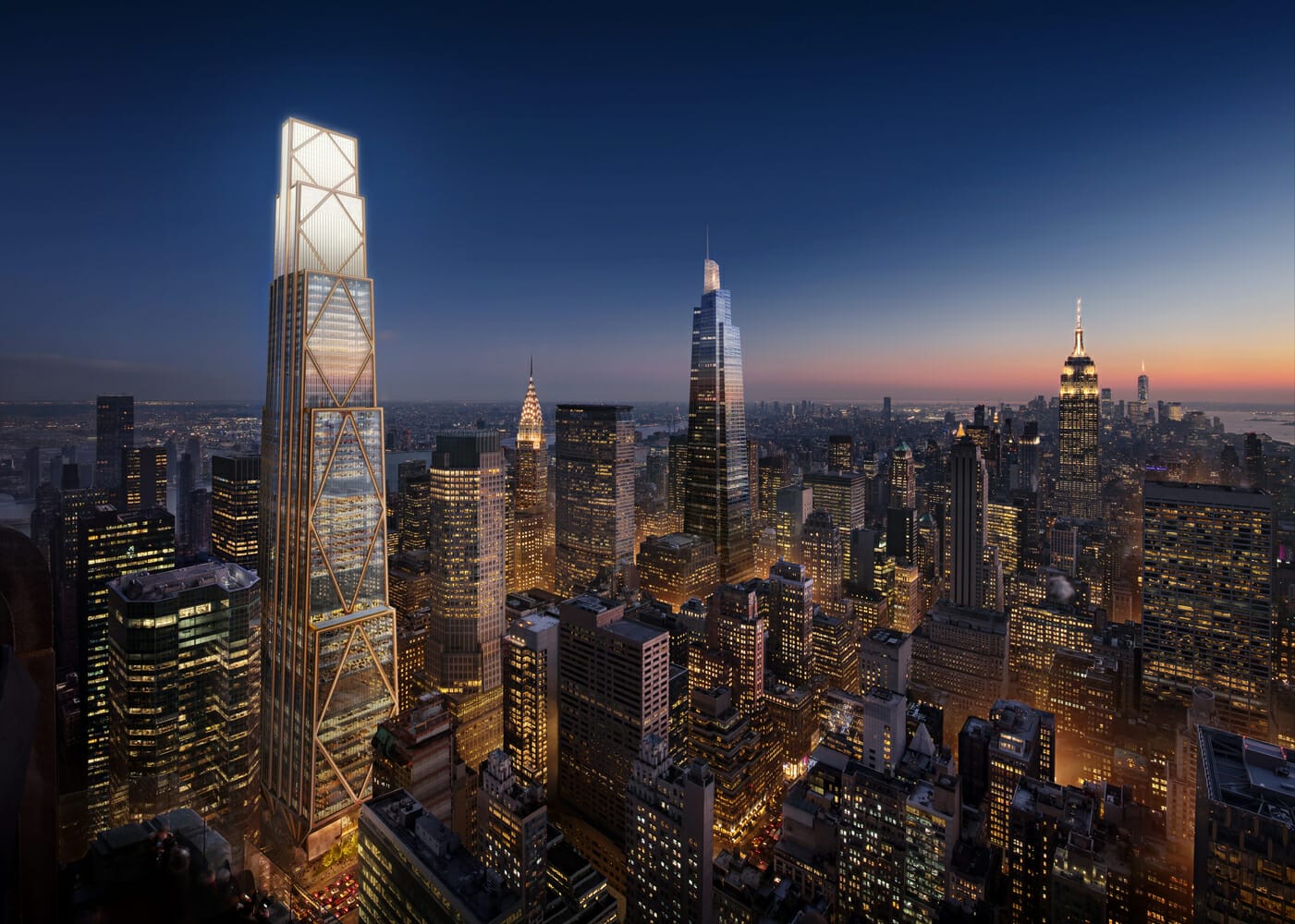
JPMorgan Chase today released a rendering of its new office, which will be the largest all-electric building in New York City by Foster+ Partners Architects. The bank which has been planning this move since at least 2007 said it is committed to the city and its residents. The 60-story tower will likely be the largest all-electric office building in New York City. It will achieve net zero operational emissions and will have exceptional indoor air quality that exceeds the highest standards in sustainability, health, and wellness.
Under the Midtown East Rezoning plan which encourages modern office construction and improvements to the business district’s public realm and transportation, the company plans to construct a new office tower on Eighth Avenue.
The new building, which will have a height of 423 meters and will be 60 stories tall, will be the largest such tower in the city. Featuring an array of high-tech construction systems, the building will house up to 14,000 employees in what is billed as a renaissance of traditional offices under the new Midtown East rezoning plan.

According to Norman Foster, Founder and Executive Chairman of Foster + Partners “ JPMorgan Chase’s new headquarters rises above the city with a unique design that responds to the historic location and the legacy of the bank in New York. The building includes vital transport infrastructure underground. The result is a sophisticated design where the architecture serves as both structure and architecture, embracing a vision that will serve JPMorgan Chase well into the future.”
The Foster + Partners skyscraper planned for New York will reportedly be the largest all-electric tower in the city and a net-zero operational emitter, with 100% of its energy use coming from renewable sources and 97% of its construction materials 3,863 metric tons worth made of reused and recycled material. The building, which will be 100 percent powered by electricity generated at a New York State hydroelectric plant, is shaped like a Manhattan skyscraper in accordance with the 1916 zoning law.

The new building will house up to 14,000 employees. It will replace a facility designed in the late 1950s for about 3,500 employees. The new building will offer 2.5 times more outdoor space on the ground level of Park and Madison Avenues, featuring wider sidewalks and a large public plaza on Madison Avenue with natural green space and other amenities geared toward residents, workers, and visitors who frequent the neighborhood daily.
Sustainable Design Implications
The building will be designed to operate with no net greenhouse gas emissions, and to use advanced building systems and technology to achieve maximum energy efficiency.
Advanced building technology that uses sensors, artificial intelligence, and machine learning systems to detect, respond, and adapt to energy needs. This technology reduces water usage by more than 40 percent.

The building’s triple-pane glazing on the façade and automatic solar shades connected to HVAC systems maximize energy efficiency. There are outdoor terraces featuring natural green space and plantings. The project recycled, reused, or upcycled 97% of the building materials from the demolition, exceeding the requirement of the leading green building standard by 25%.

In the year prior to the new project’s announcement, the existing structure formerly known as the Union Carbide Building received LEED status as an energy-efficient building, prompting the local chapter of the American Institute of Architects (AIA) to issue a statement expressing concern over how this might set a precedent for sustainable design in New York.
Picture Credits: Foster + Partners




















